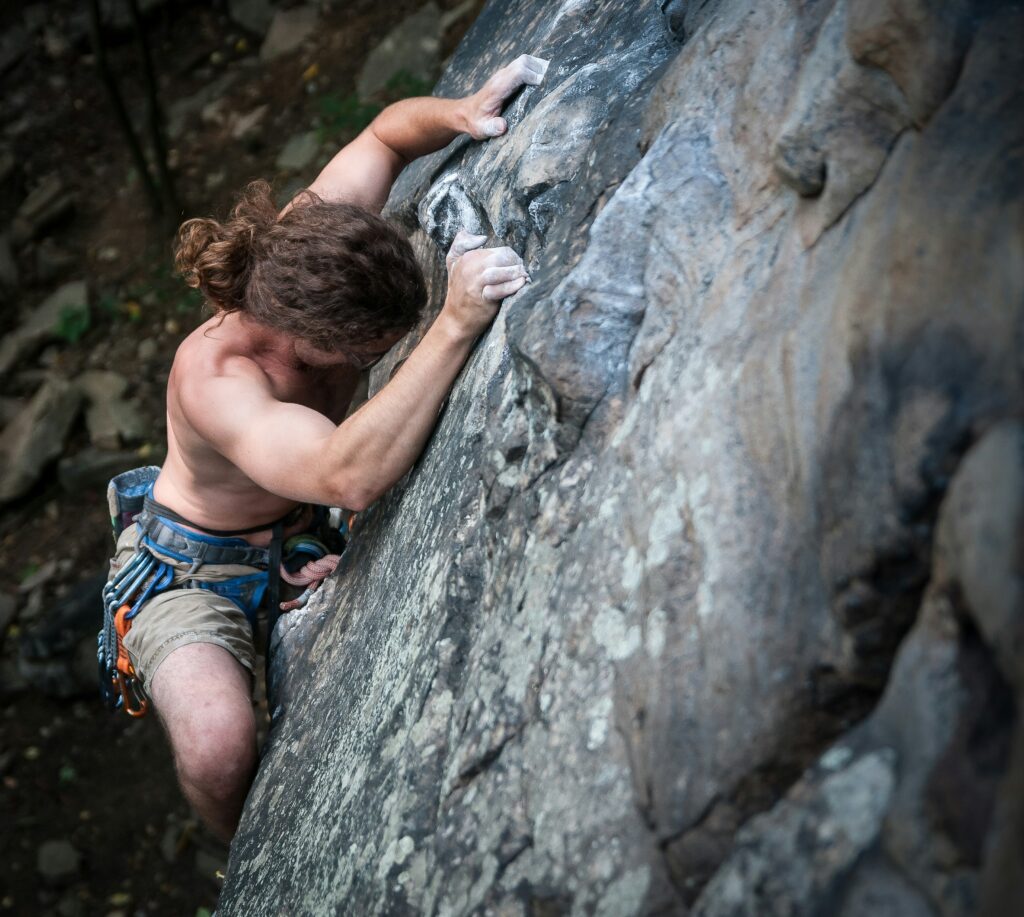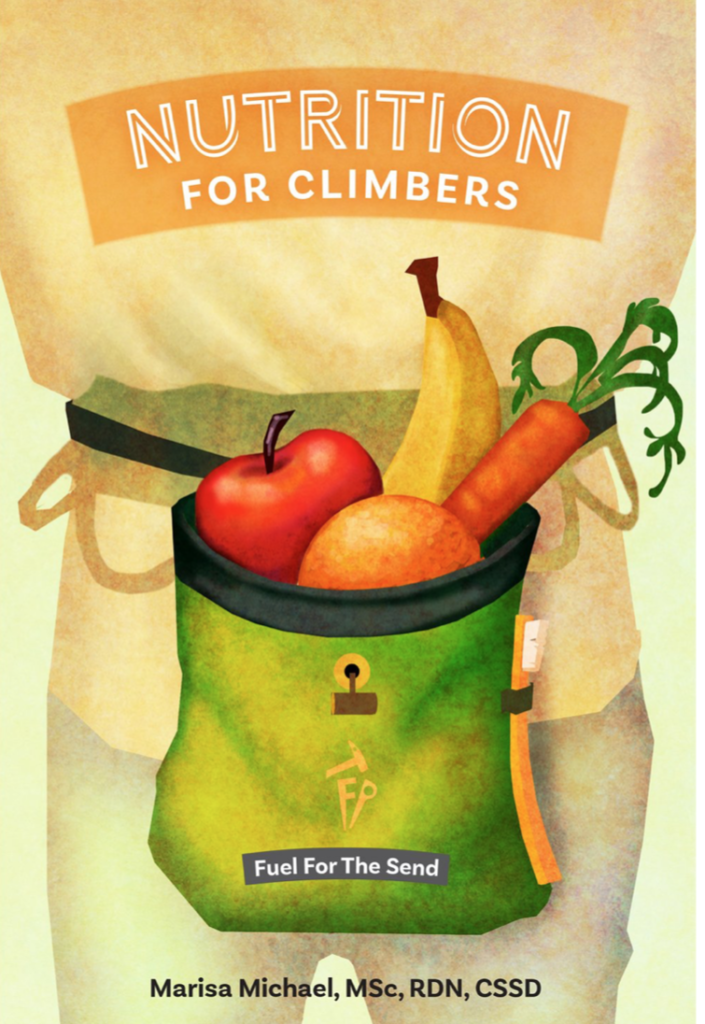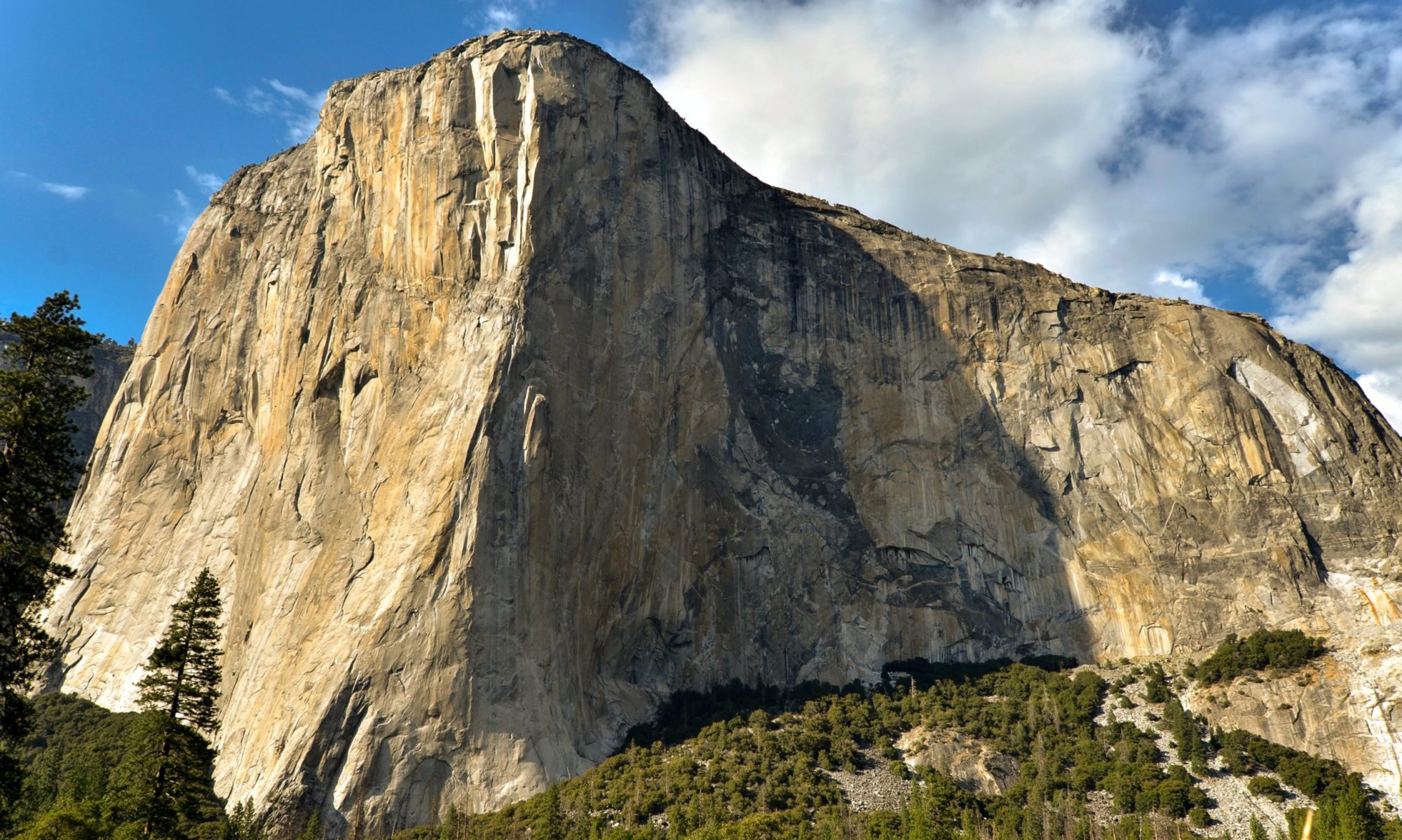By Marisa Michael, MSc, RDN, CSSD

Do climbers need to eat a lot? As with all things nutrition-related, it depends! A casual climber doing a 1-2 hour indoor gym session may not need to eat much more beyond a 200-500 calorie snack or small meal to cover that session.
A climber doing multiple days outside with long approaches or heavy gear-hauls needs much more.
Climbing varies in intensity, duration, and the venue. The more vigorous and extended the climbing time is, the more food you need.
Here’s what we do know: Based on current research, climbing burns about 10-11 calories per active minute of climbing. Aside from active climbing, you expend energy belaying, managing gear, hiking, etc. Here’s an article I wrote for Climbing Magazine on how much energy climbing takes.
The question may not be, “Do climbers need to eat a lot?” but rather “Do climbers eat enough for their training load?” And the answer we have from current research is NO. Climbers do not eat enough!
Climbers do not eat enough food
In a study I conducted on adolescent climbers’ dietary intake, 82% of them did not meet their calorie needs, and 86% under-ate their target carbohydrate needs. This is alarming for growing kids, who need adequate food to maintain puberty growth and support their sport.
Another study on adolescent climbers’ dietary intake (Simič, 2022) showed that not one climber met the recommended intake of at least 45 kcal/kg fat free mass per day, and 63% did not even get 30 kcal/kg FFM, which is considered the low threshold to have adequate energy availablity.
Several other studies in adults tell the same, under-fueled tale.
Zapf, 2001: “Nearly half of them failed to meet the recommendations for top level elite athletes.”
Sas-Nowosielski (2019): 48% of the climbers studied consumed less than 2000 calories, which is not enough to meet their targets.
Chmielewska (2023): 56% of the entire cohort had low energy availability.
Suboptimal energy availability was found in 73% of intermediate, 45% of advanced, and 40% of elite female climbers
Suboptimal energy availability was found on 47% of intermediate and 21% of advanced male climbers.
Monedero (2022): 52% of the cohort was in negative energy balance. 88% of climbers had suboptimal energy availability.
Gibson-Smith (2020): 77% of climbers did not meet estimated energy requirements.
Fernandez (2024): Only 8.9% of climbers met estimated energy requirements. 57.8% of climbers under-ate their target carbohydrate needs.
What can we understand from all of these studies? Climbers are not eating enough to support their health, normal body processes, and training load. To understand how much you need to eat as a climber, check out our blog post “How Many Calories Does Climbing Burn?”
If you’re looking for more than a simple blog post, we also have the book Nutrition for Climbers: Fuel for the Send. And our on-demand content, including free fueling guides and a few masterclasses!

Why is it a big deal to not eat enough? Because an under-fueled athlete is an under-performing athlete. If your body does not get enough food, you may be at risk for low energy availability, or Relative Energy Deficiency in Sport (REDs), which comes with its own set of symptoms and negative health consequences.
For practical tips on how to eat enough and what to eat, check out the book Nutrition for Climbers: Fuel for the Send, or browse our blog for tons of articles.
Happy climbing!
~This is general information only and not nutrition advice. Always check with your healthcare professional before undergoing any dietary or lifestyle changes.
